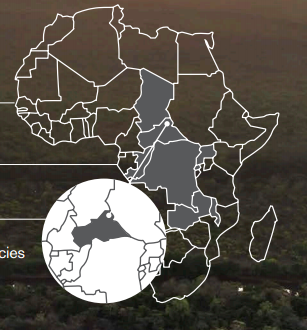We won't appear on there until we start the climb though - so please be patient. You will know we have set off when you can see us on the list!
Team Kilimanjaro will also share photos on this page as and when they get them. BUT please be aware that there is no guarantee of a phone signal on the mountain so updates may be short, or a few days apart, depending on the state of the phone signal.
So here is all you need to know:
1) Click here to track my climb.
To access the site from anywhere else simply use the following web address and click on "track a climb" on the top menu bar.
www.teamkilimanjaro.com
To access the site from anywhere else simply use the following web address and click on "track a climb" on the top menu bar.
www.teamkilimanjaro.com
2) Once on the Track a climber page, please scroll right to the bottom of the page and open up the instructions...and read them. 😉 You will need to click the cross in the top right hand corner of the box to open it. (See below)
3) Once you understand what it is you can see on the map, you can open the map by clicking on the relevant link (see below)
4) I am the main party so we will appear on the list of climbers as:
LIPH x 2, 26 Jan - 1 Feb
Don't forget that you can check for photos by heading back to the main track a climber page and clicking on the word 'photos' (see below).
If you wanted more information on the route we are taking remember to check back at my previous blog post that detailed each day. I have also highlighted the route in the photos below to give you an idea from the map. The main point is shown in the white circle on each photo below.
Day One - Trek to forest Camp
Day Two - Trek to Shira Camp 1
Day Three - Trek to Moir Hut
Day Four - Trek clockwise around northern slopes to 3rd Caves Camp
Day Six - Trek to Crater Camp and get up at midnight to SUMMIT!
Day Six cont. - After summit we descend to Mweka Camp.
Day Seven - Trek to Mweka Gate....and we're done.
As you an see, we chose the long route - not just because more time gives us more chance of acclimatising to the altitude and minimise any risk of altitude sickness - but this route also gives us the opportunity to walk right around the mountain giving us views from every angle. Most other routes just go up and down the same way, this is a once in a lifetime trip so we wanted to get the best we could out of it.
3) Once you understand what it is you can see on the map, you can open the map by clicking on the relevant link (see below)
4) I am the main party so we will appear on the list of climbers as:
LIPH x 2, 26 Jan - 1 Feb
Don't forget that you can check for photos by heading back to the main track a climber page and clicking on the word 'photos' (see below).
If you wanted more information on the route we are taking remember to check back at my previous blog post that detailed each day. I have also highlighted the route in the photos below to give you an idea from the map. The main point is shown in the white circle on each photo below.
Day One - Trek to forest Camp
Day Two - Trek to Shira Camp 1
Day Three - Trek to Moir Hut
Day Four - Trek clockwise around northern slopes to 3rd Caves Camp
Day Five - Trek to School Huts
Day Six - Trek to Crater Camp and get up at midnight to SUMMIT!
Day Six cont. - After summit we descend to Mweka Camp.
Day Seven - Trek to Mweka Gate....and we're done.
As you an see, we chose the long route - not just because more time gives us more chance of acclimatising to the altitude and minimise any risk of altitude sickness - but this route also gives us the opportunity to walk right around the mountain giving us views from every angle. Most other routes just go up and down the same way, this is a once in a lifetime trip so we wanted to get the best we could out of it.























